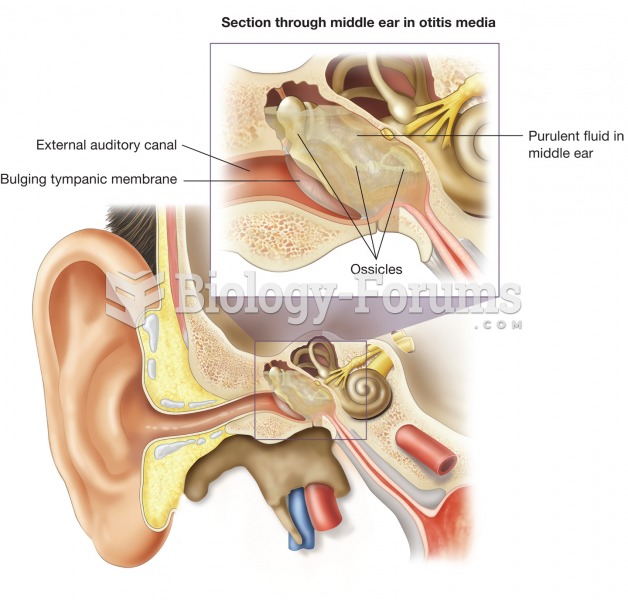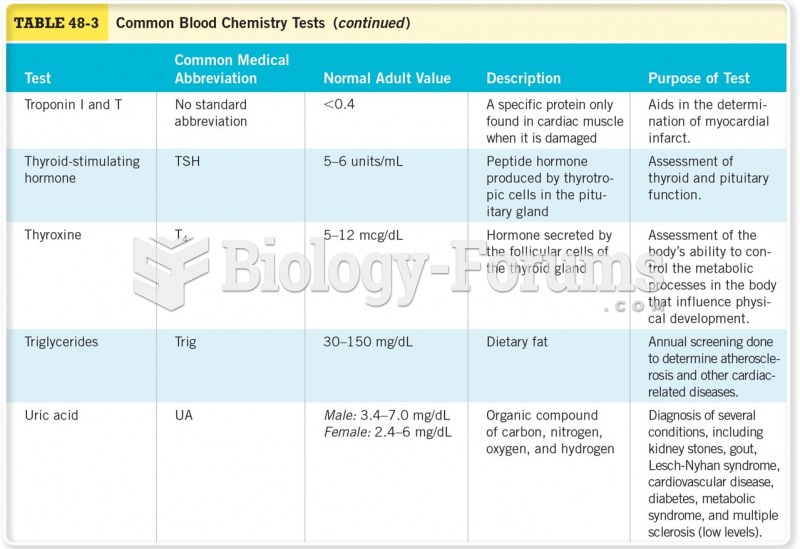|
|
|
The longest a person has survived after a heart transplant is 24 years.
Human stomach acid is strong enough to dissolve small pieces of metal such as razor blades or staples.
A seasonal flu vaccine is the best way to reduce the chances you will get seasonal influenza and spread it to others.
Nearly all drugs pass into human breast milk. How often a drug is taken influences the amount of drug that will pass into the milk. Medications taken 30 to 60 minutes before breastfeeding are likely to be at peak blood levels when the baby is nursing.
In 1886, William Bates reported on the discovery of a substance produced by the adrenal gland that turned out to be epinephrine (adrenaline). In 1904, this drug was first artificially synthesized by Friedrich Stolz.







